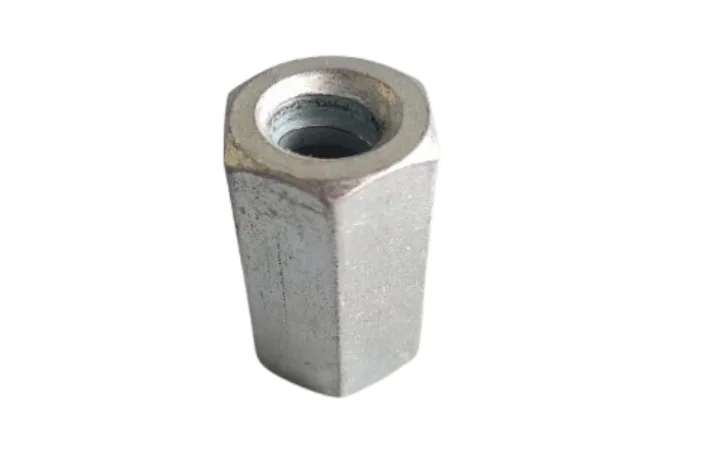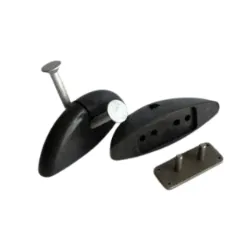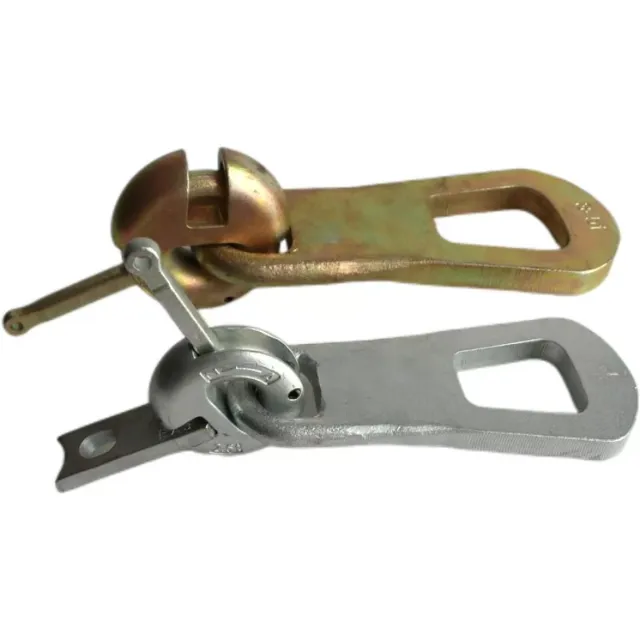The Role of the Tie Rod Nut in Construction Applications
Importance of Tie Rod Systems in Structural Stability
A tie rod nut in construction is a heavy-duty steel fastener, typically galvanized for corrosion resistance, used to secure threaded tie rods in formwork, concrete reinforcement, or bracing systems.
Common types include hex nuts, flange nuts, or locking nuts (with nylon inserts for vibration resistance). These nuts ensure tension integrity in formwork, rebar ties, or temporary bracing, often torqued to specific loads and paired with washers for even pressure distribution.
How the Tie Rod End Nut Contributes to Load Distribution
The tie rod end nut is a small but mighty part of the system. Its main job is to lock the tie rod in place. It also lets workers adjust the tightness just right. This ensures weight spreads evenly across all connected pieces. When the nut is tight, it stops the rod from loosening due to shakes or outside forces. This keeps the structure working smoothly over time.
In setups with precast concrete panels or steel frames, the tie rod end nut is super helpful. It allows small tweaks during building. These tweaks make sure everything lines up perfectly. They also ensure all parts share the weight fairly. If the tie rod end nut isn’t working right, some parts might take on too much weight. This could cause wear or even break parts sooner than expected.
Signs and Symptoms of a Loose Tie Rod Nut
Visible Indicators of Looseness in the Tie Rod System
A loose tie rod nut can show clear signs you shouldn’t ignore. One sign is when parts of the structure don’t line up anymore. You might see gaps where things used to fit tightly. Or, parts might shift out of place. You could also hear weird noises or feel shakes when the structure is in use. These are clues the nut might be loose.
Rust or corrosion around the tie rod nut is another warning. Rust weakens the nut and rod over time. It can make the nut loosen more easily. Checking the system often is key. Regular checks catch these problems early. This stops small issues from turning into big, dangerous ones.
Effects on Structural Integrity Due to a Loose Tie Rod Nut
A loose tie rod nut messes up how weight is shared. This puts extra stress on some parts of the structure. Over time, this stress can cause cracks or bending. For example, in bridges or tunnels where weight changes often, a loose nut could lead to risky wobbling. This makes the structure less safe.
Also, uneven stress can wear out parts faster. This shortens the structure’s life. It can also raise repair costs. In worst cases, it might lead to sudden failures. Keeping the tie rod nut tight is critical to avoid these problems and keep things safe.
Potential Risks of a Loose Tie Rod Nut
Impact on Safety and Stability in Construction Projects
A loose tie rod nut can be really dangerous. In projects with heavy weights or tough conditions, even a slightly loose nut can cause big trouble. It might lead to parts of the structure collapsing. For instance, on a bridge, a loose nut could weaken how much weight the bridge can hold. This is super risky during busy times.
Long-Term Consequences for Building Durability
A loose tie rod nut doesn’t just cause immediate problems. It can hurt a building’s strength over time. Uneven weight distribution makes materials wear out faster. This can lead to cracks or other damage. For example, in homes with precast concrete panels, loose nuts might cause cracks in walls. These cracks look bad and let water sneak in.
Water can cause rust or damage from freezing and thawing. This weakens the structure even more. Over time, these issues mean costly fixes or replacing parts sooner than planned. Tight tie rod end nuts help buildings last longer and stay strong.
Causes Behind a Loose Tie Rod Nut
Common Installation Mistakes Leading to Looseness
Mistakes during setup are a big reason tie rod end nuts get loose. If the nut isn’t tightened enough, it can loosen over time. This happens a lot in projects with heavy machines or moving weights. The shakes from these can wiggle the nut loose. Using the wrong tools or methods can also harm the nut or rod’s threads. This makes it hard for them to stay tight.
Another mistake is not checking the system after setup. Without checks, small problems like uneven tightness or misalignment get missed.
External Factors That Affect the Tightness of the Tie Rod End Nut
Things outside the structure can also loosen a tie rod nut. Weather, like rain or salty air, can cause rust around the nut. Rust weakens the metal and makes it easier for the nut to come loose. Shakes from things like traffic, wind, or earthquakes can also loosen nuts over time. These forces keep pushing and pulling on the tie rod system.
Regular upkeep is super important. Checking and tightening nuts often can stop these problems. It keeps the tie rod system strong and safe, even in tough conditions.
Solutions for Addressing a Loose Tie Rod Nut Issue
Steps to Re-Tighten or Replace the Tie Rod End Nut Safely
Fixing a loose tie rod nut needs careful steps to avoid more damage. First, check the whole tie rod system. Look for rust or wear. If you see rust, clean it off with safe cleaning products before tightening the nut again.
Tools and Techniques for Proper Adjustment
Using the right tools is key to keeping a tie rod nut tight. A torque wrench helps tighten nuts just right without going too far. You can also use special glue on the threads to stop the nut from loosening due to shakes. This glue is called a thread-locking compound.
In places where rust is a problem, use nuts made of stainless steel. Or, add coatings that fight rust. Check the system often with your eyes or special tests like ultrasonic testing. These catch hidden problems early, keeping the structure safe.
Qingdao Baoqi Intelligent Co., Ltd. makes top-quality forging and casting parts, like precast accessories and tying solutions. Their products follow strict global standards, like ISO-9001 certification.
FAQs
Q: What are some visible signs that indicate a loose tie rod end nut?
Look for parts not lining up, weird shakes or noises during use, and rust around the tie rod nut.
Q: How does a loose tie rod nut impact structural integrity?
A loose nut messes up weight sharing. This stresses some parts too much, causing cracks or bending over time.
Q: What tools are recommended for tightening a tie rod end nut?
Use a torque wrench for exact tightening. Thread-locking glue can also help keep the nut in place.
Q: Can environmental factors contribute to loosening?
Yes. Rain, rust, and shakes from wind or traffic can loosen a tie rod nut over time.
Q: Why choose Qingdao Baoqi Intelligent Co., Ltd for construction solutions?
They make reliable parts for building projects. Their ISO-9001 certification ensures high-quality products.
Contact Qingdao Baoqi Intelligent Co., Ltd today for custom solutions for your construction projects!










